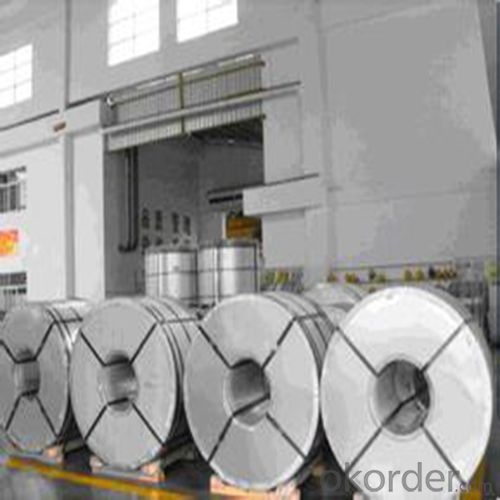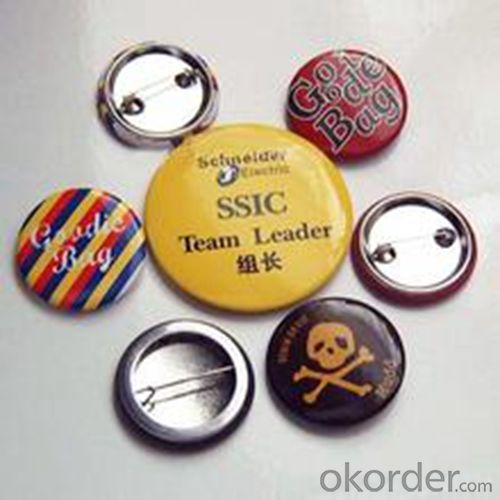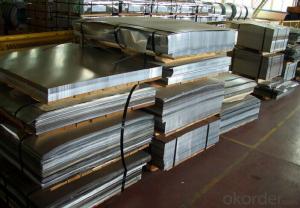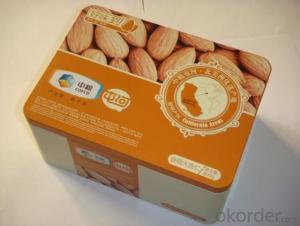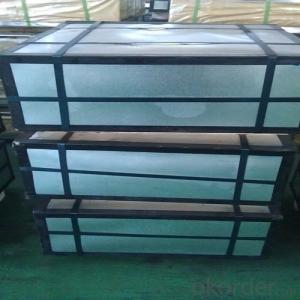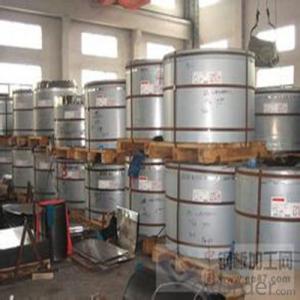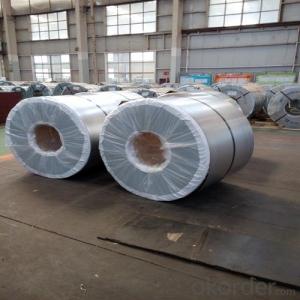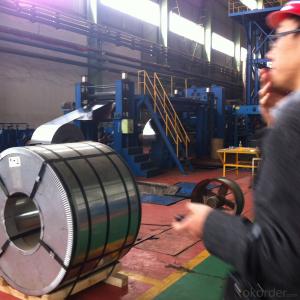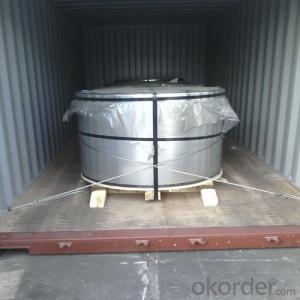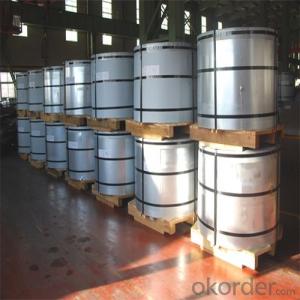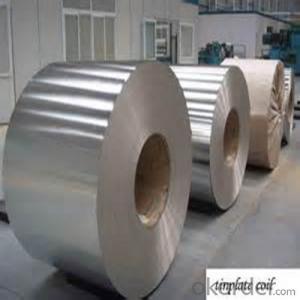Prime Good Quality Tin Free Steel and ETP for Crown Caps
- Loading Port:
- Shanghai
- Payment Terms:
- TT OR LC
- Min Order Qty:
- 25 m.t.
- Supply Capability:
- 25000 m.t./month
OKorder Service Pledge
OKorder Financial Service
You Might Also Like
Specification
1.Structure of Prime Good Quality Tin Free Steel and ETP for Crown Caps Description
Tin Free Steel (TFS) is thin black plate with two coats; one of metal chrome film and the other of chromium oxide. TFS is ideal for the manufacturing of crowns, container ends & shallow drawn cans etc. TFS is also known as Chromium coated steel.
2.Main Features of the Prime Good Quality Tin Free Steel and ETP for Crown Caps
Appearance – Tinplate is characterized by its beautiful metallic luster. Products with various kinds of surface roughness are produced by selecting the surface finish of the substrate steel sheet.
Paintability and printability – Tinplates have excellent paintability and printability. Printing is beautifully finished using various lacquers and inks.
Formability and strength – Tinplates have got very good formability and strength. By selecting a proper temper grade, appropriate formability is obtained for different applications as well as the required strength after forming.
Corrosion resistance – Tinplate has got good corrosion resistance. By selecting a proper coating weight, appropriate corrosion resistance is obtained against container contents. Coated items should meet 24 hour 5 % salt spray requirement.
3.Prime Good Quality Tin Free Steel and ETP for Crown Caps Images
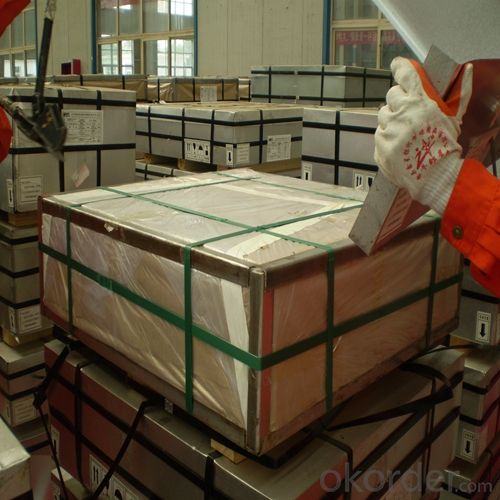


4.Prime Good Quality Tin Free Steel and ETP for Crown Caps Specification
Specification of :
Standard: ISO 11949 -1995, GB/T2520-2000,JIS G3303,ASTM A623, BS EN 10202
Material: MR,SPCC
Thickness:0.15mm - 0.50mm
Width: 600mm -1150mm
Temper: T1-T5
Annealing: BA & CA
Coil Inner Diameter: 508mm
Weight: 6-10 tons/coil 1~1.7 tons/sheets bundle
Passivation:311
Oil: DOS
Surface: Finish,bright,stone,matte,silver
5.FAQ of Prime Good Quality Tin Free Steel and ETP for Crown Caps
- How are the tinplates specified?
The tinplates are specified as per the steel base, extent of tempering, the coating weight, annealing method and the surface finish.
- How many types there are for base steels?
The base steels are of three types: Type MR, L, D
- Q: Can tinplate packaging be used for automotive products?
- Yes, tinplate packaging can be used for automotive products. Tinplate is a durable and corrosion-resistant material, making it suitable for protecting automotive components such as spare parts, lubricants, and chemicals. Additionally, tinplate packaging can be customized to meet specific requirements, ensuring the safe transportation and storage of automotive products.
- Q: Is tinplate resistant to scratches and dents?
- Yes, tinplate is generally resistant to scratches and dents due to its durability and protective coatings.
- Q: How does tinplate packaging contribute to product protection against light?
- Tinplate packaging contributes to product protection against light by providing a durable and opaque barrier. Its metallic properties prevent light from penetrating through the packaging, thus minimizing exposure to UV rays and other forms of light that can degrade the quality and shelf life of sensitive products.
- Q: How does tinplate affect the overall product shelf appeal?
- Tinplate can significantly enhance the overall product shelf appeal due to its attractive and glossy appearance. The metallic finish of tinplate gives products a premium and luxurious look, making them stand out among competitors on store shelves. Additionally, tinplate's durability and ability to maintain its shape and color over time improve the product's presentation, creating a positive impression on consumers.
- Q: Cookies with tinplate packaging has what advantage
- 1. good mechanical properties: tinplate cans relative to other containers, such as plastic, glass, paper containers and strength, and good rigidity, it is not easy to break. It is not only used for small sale packing, but also the main container for large transportation package. 2. excellent barrier: Tin than any other...
- Q: How is tinplate coated for signage?
- Tinplate for signage is typically coated through a process called electroplating, where a thin layer of tin is deposited onto the surface of the metal. This coating provides protection against corrosion and enhances the aesthetic appeal of the signage.
- Q: What are the common printing and decoration techniques for tinplate?
- Some common printing and decoration techniques for tinplate include lithography, offset printing, embossing, debossing, hot stamping, and varnishing. These techniques allow for vibrant and detailed designs to be applied to tinplate surfaces, making them visually appealing and customizable for various products and purposes.
- Q: What are the environmental impacts of using tinplate?
- The environmental impacts of using tinplate include deforestation, energy consumption, and pollution. The production of tinplate often requires large amounts of timber for the production of charcoal, resulting in deforestation and habitat destruction. Additionally, the manufacturing process of tinplate involves high energy consumption, which contributes to greenhouse gas emissions. Furthermore, the use of chemicals in the production and coating of tinplate can lead to water and soil pollution if not properly managed.
- Q: How does tinplate compare to other packaging materials in terms of recyclability?
- Tinplate is highly recyclable and is considered one of the most environmentally friendly packaging materials available. It can be recycled infinitely without losing its properties, making it a preferred choice for sustainability-conscious industries. In comparison to other packaging materials such as plastic or glass, tinplate has a much higher recycling rate and is widely accepted in recycling programs worldwide. Its recyclability significantly reduces the environmental impact and contributes to a circular economy.
- Q: How does tinplate contribute to the safety of toys?
- Tinplate contributes to the safety of toys by providing a durable and non-toxic material that is resistant to corrosion and can withstand rough play. It also helps to prevent sharp edges, reducing the risk of injuries. Additionally, tinplate is often used to create protective coatings on toys, making them less prone to breakage and ensuring they meet safety standards.
Send your message to us
Prime Good Quality Tin Free Steel and ETP for Crown Caps
- Loading Port:
- Shanghai
- Payment Terms:
- TT OR LC
- Min Order Qty:
- 25 m.t.
- Supply Capability:
- 25000 m.t./month
OKorder Service Pledge
OKorder Financial Service
Similar products
Hot products
Hot Searches
Related keywords


